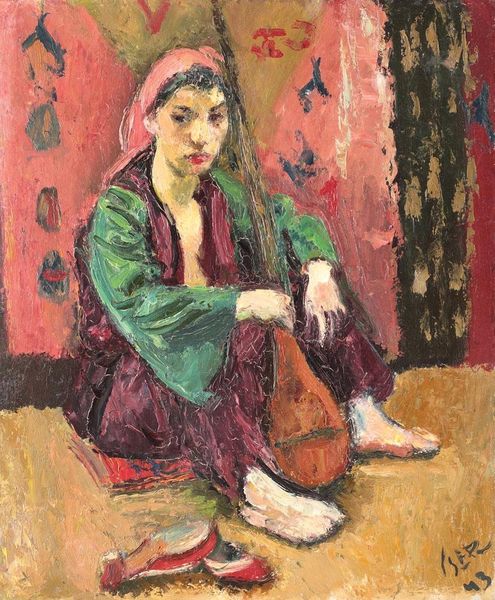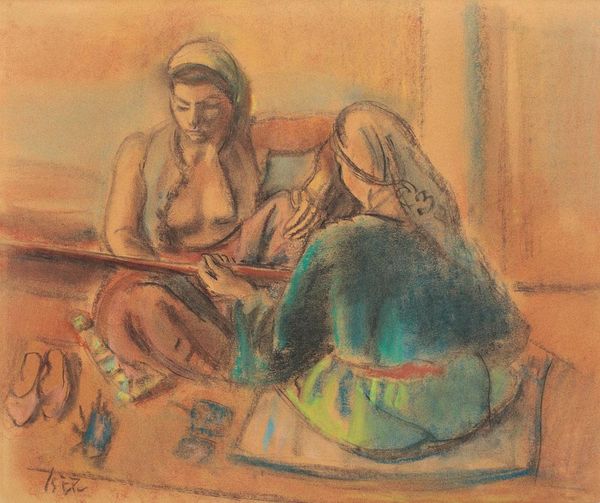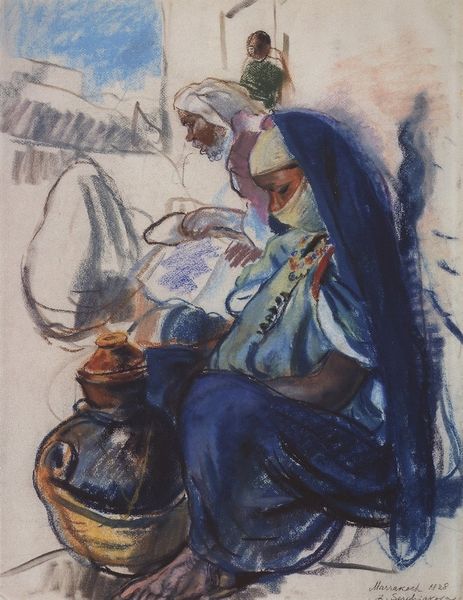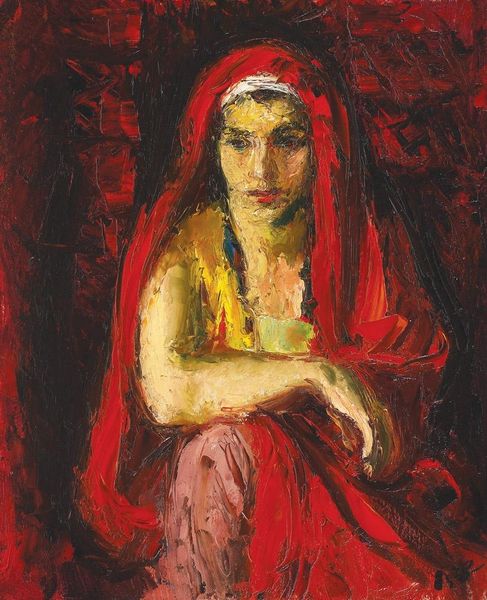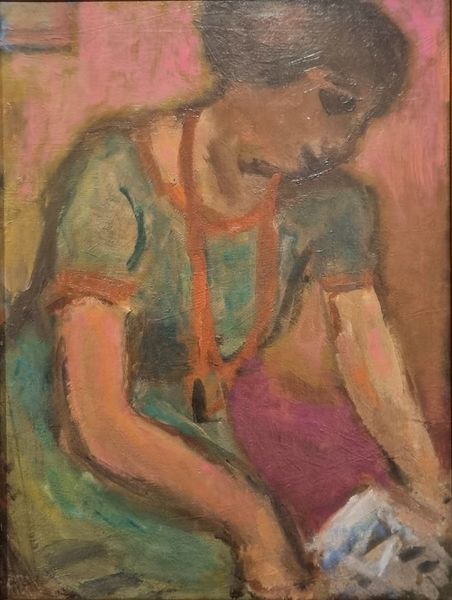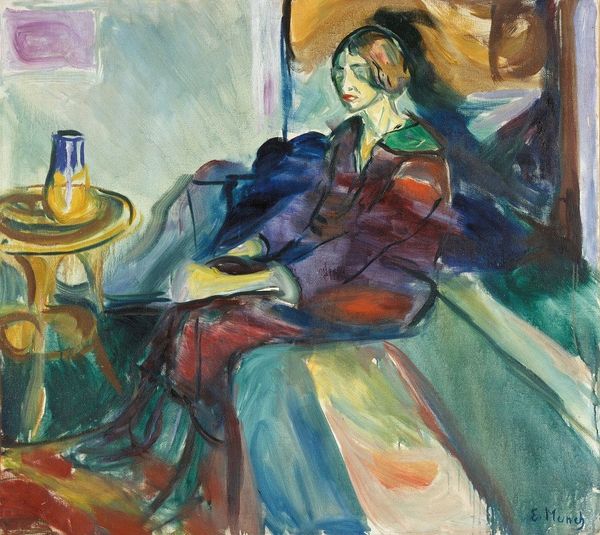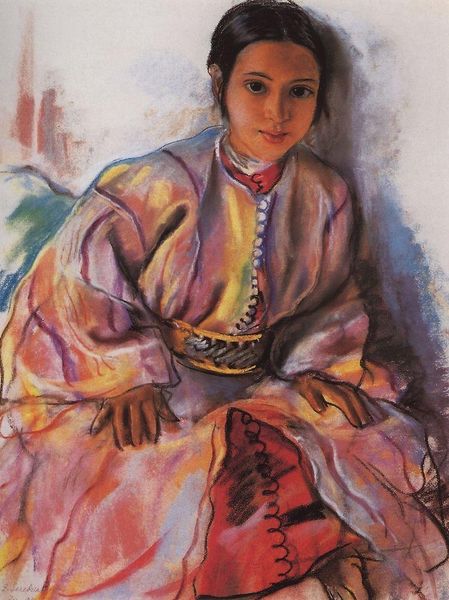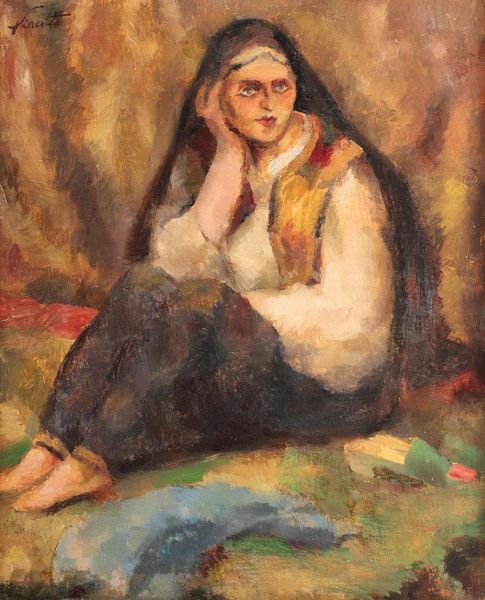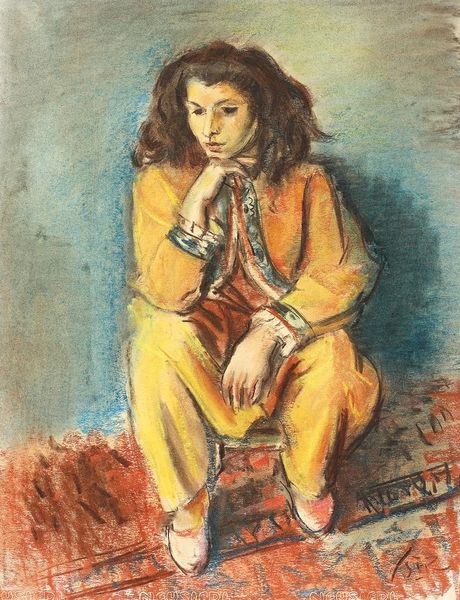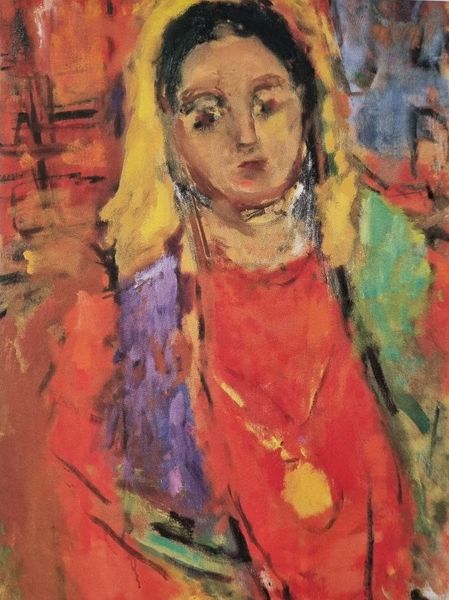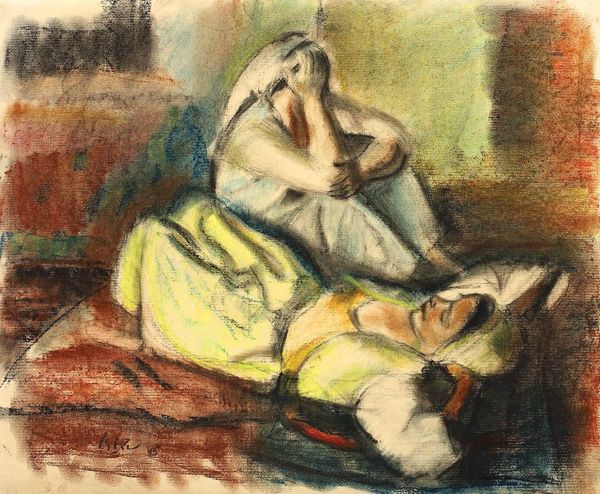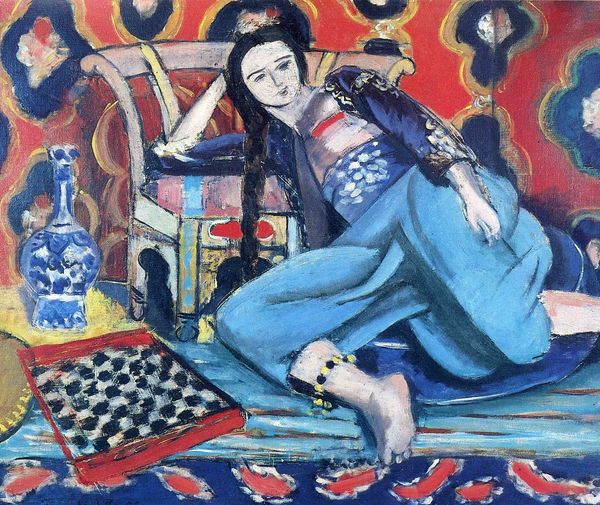
painting, watercolor
#
portrait
#
painting
#
figuration
#
oil painting
#
watercolor
#
genre-painting
#
musical-instrument
#
portrait art
#
modernism
#
realism
Copyright: Iosif Iser,Fair Use
Curator: Immediately, I am struck by the pervasive melancholy that seems to emanate from this watercolor painting. Editor: I am pleased to introduce Iosif Iser's 1946 work, "Tatar Woman with Mandoline". Iser was a Romanian artist with a fascinating history, often navigating the socio-political landscape through his art. Curator: It is this subtle fusion of figuration with Modernist elements, this watercolor medium adding a particular airiness to the figure… What’s the story with this piece emerging in the late 40s? Editor: Iser, though of Jewish heritage, was appointed as a scenographer for theaters during a period of intense antisemitism and political turmoil. While overtly complying, he covertly maintained ties to Jewish communities, reflecting a complex negotiation with oppressive power structures. This "Tatar Woman" is emblematic, to me, of a post-war reckoning with identity in a fractured cultural landscape. Her ethnicity is specifically identified; perhaps this highlights both cultural pride, and the search for solidarity. Curator: I notice that. Yet the emphasis appears to be equally on the composition's lines: they are intentionally unfussy, aren’t they? See the way the lines aren’t completely filled with pigment, giving the subject a lighter and, arguably, vulnerable ambiance. Look how that stark jacket pops against that soft blue. Editor: Precisely! While Iser painted numerous portraits during this time, many depicted figures from the margins or from specific ethnic groups, perhaps offering a nuanced commentary on power and representation. Considering Iser’s broader artistic output and the prevailing societal climate, it raises intriguing questions about the role of artists amidst ideological constraints. Was he making a bold statement or subtly subverting norms? Curator: What resonates with me is Iser’s ability to capture a poignant emotionality using an evocative arrangement of colors. Editor: Indeed, I see it as an enduring testament to the power of art to navigate the intricacies of personal and collective identities within historically charged settings.
Comments
No comments
Be the first to comment and join the conversation on the ultimate creative platform.
